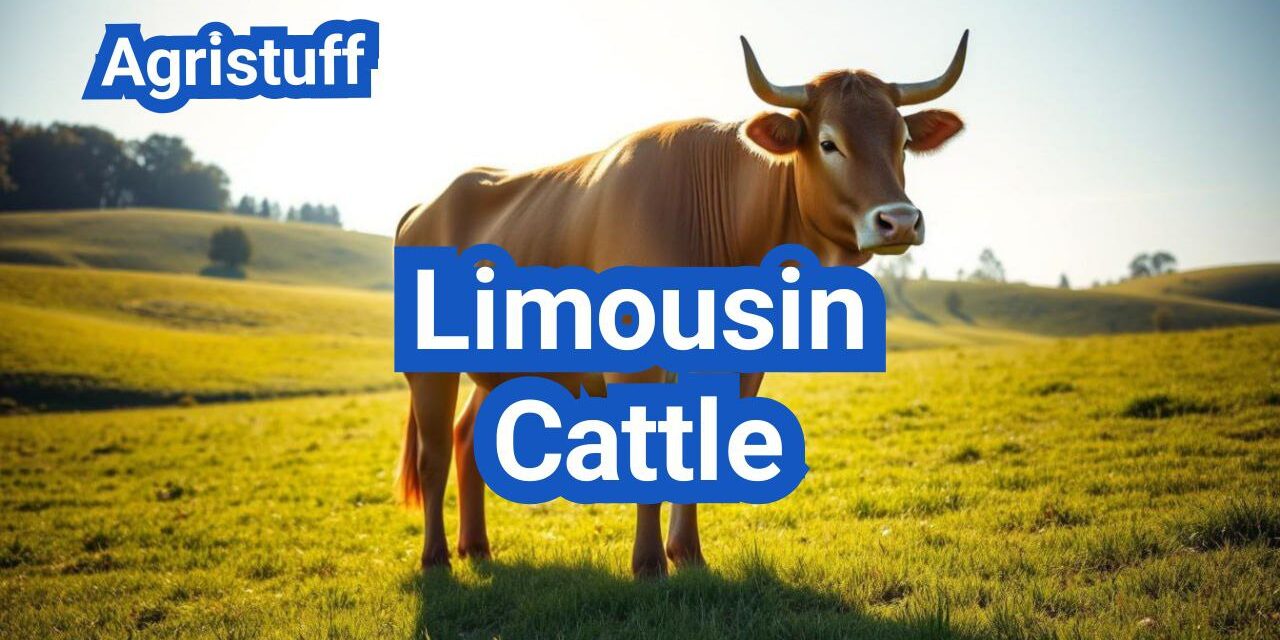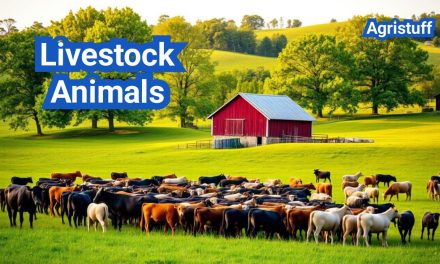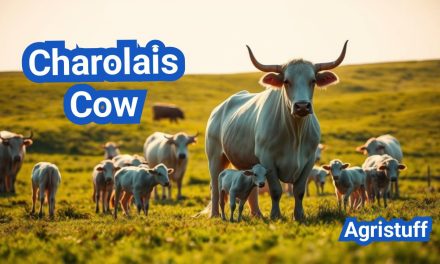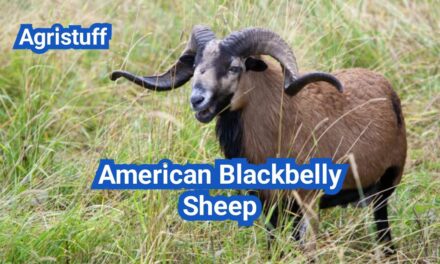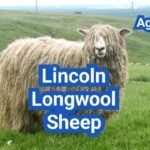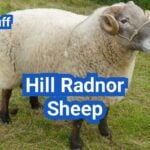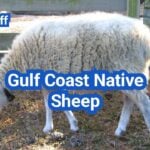The Limousin breed has a rich history that dates back to the 18th century in France. Originating in the Limousin region, this golden-red coated breed is renowned for its exceptional muscle development and is considered one of the most popular beef breeds worldwide.
This article will delve into the history, origin, and characteristics of the Limousin breed, exploring its breeding practices and various uses. By understanding the unique features of this breed, farmers and cattle enthusiasts can gain valuable insights into its significance in the agricultural industry.
Key Takeaways
- Origin of the Limousin breed in France
- Characteristics of the Limousin breed, including its golden-red coat and muscle development
- Importance of the breed in the global beef industry
- Breeding practices for Limousin cattle
- Various uses of the Limousin breed
The Story Behind Limousin Cattle
Limousin cattle have a storied past that dates back to ancient times, with evidence of their existence found in prehistoric cave drawings. This ancient breed has a rich history that spans thousands of years, evolving over time through careful selection and breeding practices.
Historical Development of the Breed
The development of Limousin cattle is deeply rooted in the Limousin region of France. The breed was first recognized for its exceptional muscling and hardiness, characteristics that have been preserved and enhanced over centuries. According to historical records, Limousin cattle were highly valued for their ability to thrive in challenging environments.
“The Limousin breed has been selected for centuries for its robustness and its ability to produce high-quality meat.”
The breed’s early development was influenced by the local agricultural practices and the need for cattle that could withstand the rugged conditions of the Limousin region. Over time, breeders selectively bred Limousin cattle to emphasize their desirable traits, resulting in the robust and muscular animals we know today.
Significance in Global Agriculture
Limousin cattle have become significant in global agriculture due to their exceptional beef production qualities. Their ability to produce high-quality meat has made them a popular choice among farmers and ranchers worldwide.
| Characteristic | Description | Benefit |
|---|---|---|
| Muscling | Exceptional muscular development | Higher yield of saleable meat |
| Hardiness | Ability to thrive in various conditions | Reduced veterinary costs and improved animal welfare |
| Feed Efficiency | Efficient conversion of feed into meat | Lower production costs and environmental impact |
The significance of Limousin cattle in global agriculture is further underscored by their adaptability to different farming systems and climates. As the global demand for high-quality beef continues to grow, the role of Limousin cattle is likely to remain crucial in meeting this demand.
Origin and Development of Limousin Cattle

Limousin cattle have their roots in the harsh climate of the Limousin region in southwestern France. This region is characterized by its rugged terrain and challenging environmental conditions, which played a significant role in shaping the breed’s hardiness and adaptability.
The Limousin Region of France
The Limousin region, known for its diverse landscapes and climates, has been instrumental in the development of the Limousin cattle breed. The region’s farmers historically selected cattle that could thrive in these conditions, leading to a breed that is both robust and productive.
Early Breeding Practices
Early breeding practices in the Limousin region focused on creating cattle that were well-suited to the local environment. This involved selecting animals with desirable traits such as hardiness, fertility, and the ability to produce high-quality beef. The selective breeding process contributed to the development of the Limousin breed’s distinctive characteristics.
Global Spread of the Breed
Over time, Limousin cattle have spread globally, with significant populations in Europe, North America, and other parts of the world. Their adaptability to various climates and production systems has made them a popular choice among cattle breeders. Today, Limousin cattle are recognized for their superior muscling and beef quality, attributes that have contributed to their global dissemination.
| Region | Year Introduced | Current Population |
|---|---|---|
| Europe | Historic | Significant |
| North America | Late 20th Century | Growing |
| Australia | Early 21st Century | Emerging |
The global spread of Limousin cattle is a testament to their versatility and the value they bring to cattle production systems worldwide.
Physical Characteristics of Limousin Cattle
Limousin cattle are renowned for their exceptional physical attributes, which have made them a popular choice among cattle breeders worldwide. Their distinctive appearance and muscular build contribute to their appeal.
Distinctive Golden-Red Coat Color
One of the most recognizable features of Limousin cattle is their golden-red coat color, which can vary in shade from a light wheat color to a deeper red. This characteristic coat color is a result of selective breeding and is a hallmark of the breed.
Size and Weight Standards
Limousin cattle are known for their muscular build and moderate size. Males typically weigh between 1,100 and 1,500 pounds, while females usually range from 900 to 1,200 pounds. The breed’s size and weight make them suitable for a variety of production systems.
Structural Features and Conformation
The structural features of Limousin cattle include a muscular physique, with a deep and well-sprung ribcage. Their conformation is characterized by a straight or slightly convex profile, with a broad and deep chest. These features contribute to the breed’s overall muscling and carcass quality.
| Characteristic | Males | Females |
|---|---|---|
| Weight (pounds) | 1,100-1,500 | 900-1,200 |
| Height (inches) | 54-60 | 52-56 |
| Muscling | Heavy muscling | Moderate to heavy muscling |
Understanding Limousin Cattle Breed Standards

Understanding the breed standards for Limousin cattle is essential for breeders and farmers who aim to maintain the breed’s high quality and performance. Breed standards serve as a guideline for the ideal characteristics of Limousin cattle, ensuring consistency and excellence across the breed.
Official Breed Requirements
The official breed requirements for Limousin cattle are detailed and specific, covering various aspects such as coat color, size, weight, and structural conformation. Coat color is one of the distinctive features of Limousin cattle, typically exhibiting a golden-red color. The breed standard emphasizes the importance of a uniform coat color, which is a key identifier of the breed.
In terms of size and weight, Limousin cattle are known for their muscular build and moderate size. Males typically weigh between 1,000 to 1,400 kg (2,200 to 3,100 lbs), while females weigh between 600 to 900 kg (1,300 to 2,000 lbs). The breed standards specify the ideal height and weight ranges to ensure that the cattle conform to the expected muscular and growth characteristics.
Variations Within the Breed
While the breed standards provide a clear guideline on the ideal characteristics of Limousin cattle, there can be variations within the breed. These variations can arise due to factors such as genetics, breeding practices, and environmental conditions. Genetic diversity is crucial for the long-term health and adaptability of the breed, allowing for continuous improvement through selective breeding.
Despite these variations, Limousin cattle are known for their overall consistency in terms of quality and performance. Breeders and farmers work to maintain the breed standards while also selecting for desirable traits that enhance the breed’s productivity and hardiness.
Genetic Attributes of Limousin Cattle
Limousin cattle are renowned for their exceptional genetic attributes that contribute to their superior muscling and overall performance. These genetic traits have been developed over generations, making Limousin cattle a preferred choice for beef production worldwide.
The genetic makeup of Limousin cattle includes several key factors that contribute to their muscular development. One of the most significant genetic attributes is the F94L myostatin variant.
The F94L Myostatin Variant
The F94L myostatin variant is a genetic mutation that affects the myostatin gene, which is responsible for regulating muscle growth. In Limousin cattle, this variant leads to increased muscularity without the negative effects associated with other myostatin mutations, such as reduced tenderness or increased calving difficulty.
The F94L variant is particularly valuable because it enhances muscling while maintaining the overall health and fertility of the animals. This makes Limousin cattle an attractive option for producers looking to improve the muscular development of their herds.
Genetic Basis for Superior Muscling
The genetic basis for the superior muscling in Limousin cattle is multifaceted, involving not just the F94L myostatin variant but also other genetic factors that influence muscle growth and development. Selective breeding has played a crucial role in enhancing these genetic traits over time.
By understanding the genetic attributes of Limousin cattle, breeders can make informed decisions about breeding programs, potentially leading to further improvements in muscling and overall performance. The genetic diversity within the breed also provides a foundation for continued selection and improvement.
How to Start Raising Limousin Cattle

For those looking to start raising Limousin cattle, the journey begins with a solid foundation in terms of investment and knowledge. Raising Limousin cattle can be a profitable and rewarding venture, but it requires careful planning and a significant initial investment.
Initial Investment Requirements
The initial investment for raising Limousin cattle includes the cost of purchasing the animals, equipment, and facilities. The cost of Limousin cattle can vary depending on factors such as the quality, age, and breeding of the animals. It’s essential to set a budget and stick to it to avoid financial strain.
Key components of the initial investment:
- Purchasing high-quality Limousin cattle
- Acquiring necessary equipment such as fencing, feeding troughs, and veterinary supplies
- Developing or renovating facilities such as barns, pastures, and handling areas
Selecting Your First Animals
Selecting the right Limousin cattle for your farm is crucial for its success. Consider factors such as the age, health, and breeding of the animals. It’s also important to purchase from reputable breeders to ensure you’re getting high-quality animals.
Tips for selecting your first Limousin cattle:
- Look for animals with good conformation and muscling
- Consider the genetic diversity of the animals to avoid inbreeding
- Ensure the animals are healthy and have been properly vaccinated
Essential Equipment and Facilities
The right equipment and facilities are vital for the efficient management of your Limousin cattle farm. This includes fencing to secure your pastures, feeding and watering systems, and handling facilities for veterinary care and cattle management.
Essential equipment and facilities:
- Sturdy fencing to enclose pastures and prevent escape or predator entry
- Feeding and watering systems that are easy to clean and maintain
- Handling facilities such as chutes and squeeze chutes for safe handling
- Barns or shelters to protect cattle from extreme weather conditions
Proper Care and Management of Limousin Cattle
The success of Limousin cattle farming depends on appropriate care and management practices. Ensuring the well-being of these animals is crucial for their productivity and overall health.
Housing and Space Requirements
Limousin cattle need adequate housing and space to thrive. The housing should protect them from extreme weather conditions and provide enough ventilation. A minimum of 60 square feet per animal is recommended for comfortable living conditions.
Adequate space is also essential for reducing stress among the cattle. Overcrowding can lead to health issues and decreased productivity. Farmers should ensure that there is sufficient room for feeding, watering, and movement.
Nutritional Needs Throughout Different Life Stages
Nutritional requirements for Limousin cattle vary across different life stages. Calves require high-quality milk or milk replacer, along with starter feeds that are rich in protein and energy. As they grow, their diet should be adjusted to include more forage and less concentrate.
Growing and finishing cattle have different nutritional needs. They require a diet that supports their growth rate and development. Farmers should consult with a nutritionist to formulate a diet that meets the specific needs of their Limousin cattle at each stage.
Health Management and Disease Prevention
Effective health management is critical for maintaining a healthy Limousin cattle herd. Regular vaccinations, parasite control measures, and monitoring for signs of illness are essential practices. Farmers should work closely with a veterinarian to develop a health program tailored to their specific operation.
Disease prevention strategies include maintaining a clean environment, providing adequate nutrition, and reducing stress. Regular health checks can help identify potential issues early, allowing for timely intervention.
By focusing on these aspects of care and management, farmers can ensure the well-being and productivity of their Limousin cattle.
Breeding Limousin Cattle Successfully

To breed Limousin cattle successfully, farmers must focus on choosing superior breeding stock and understanding the nuances of calving ease. This approach not only enhances the overall quality of the herd but also contributes to the efficiency of the breeding program.
Selecting Breeding Stock
The selection of breeding stock is a critical step in Limousin cattle breeding. It involves evaluating the genetic potential of the animals for traits such as growth rate, muscling, and fertility. Genetic testing and performance records play a crucial role in this process, enabling breeders to make informed decisions.
When selecting breeding stock, consider the following factors:
- Pedigree and genetic lineage
- Physical conformation and structural correctness
- Growth rate and muscling
- Fertility and reproductive history
Understanding Limousin Calving Ease
Calving ease is a significant trait in Limousin cattle breeding, directly impacting the health and viability of both the calf and the dam. Limousin cattle are known for their calving ease, which is attributed to their genetic makeup and breeding practices.
| Trait | Description | Importance |
|---|---|---|
| Calving Ease | Measure of the ease with which a cow gives birth | High |
| Birth Weight | Weight of the calf at birth | Medium |
| Gestation Length | Length of pregnancy | Medium |
Reproductive Management Techniques
Effective reproductive management is crucial for the success of a Limousin breeding program. This includes reproductive health monitoring, nutrition management, and breeding strategies. Techniques such as estrus synchronization and artificial insemination can enhance reproductive efficiency.
Key reproductive management practices include:
- Regular veterinary checks
- Nutritional management tailored to reproductive needs
- Breeding soundness examinations for bulls
By focusing on these aspects, breeders can improve the overall productivity and profitability of their Limousin cattle operation.
Commercial Uses of Limousin Cattle

The commercial use of Limousin cattle is predominantly centered around beef production, leveraging their genetic superiority. Limousin cattle have been widely adopted in the beef industry due to their exceptional growth rates, muscular development, and carcass quality.
Beef Production Excellence
Limousin cattle are renowned for their beef production excellence. They offer several advantages that make them ideal for beef production systems. Their genetic makeup allows for superior muscling and growth rates, which are critical factors in commercial beef production.
The breed’s ability to produce high-quality beef is attributed to its genetic attributes, such as the F94L myostatin variant, which enhances muscular development. This results in Limousin cattle producing carcasses with a higher yield grade and superior meat quality.
Carcass Yield Grade and Quality
The carcass yield grade and quality of Limousin cattle are among the highest in the beef industry. The breed’s genetic predisposition towards muscular development translates into higher yielding carcasses with less fat, making them highly sought after by producers and processors alike.
Limousin cattle carcasses are characterized by their lean meat and fine marbling, which contribute to the overall quality and palatability of the beef. This makes Limousin beef a premium product in the market, commanding a higher price due to its superior eating quality and nutritional profile.
Limousin Cattle in the United States

The introduction of Limousin cattle to the United States marked a significant milestone in the country’s beef production history. Since their arrival, Limousin cattle have contributed substantially to the genetic improvement of the U.S. cattle herd.
Early Days and Establishment
The history of Limousin cattle in the U.S. began with their introduction from France. The breed was initially met with skepticism, but its superior muscling and growth rates soon made it a favorite among cattle breeders. The breed’s hardiness and efficiency in producing high-quality beef were key factors in its successful establishment.
As the breed gained popularity, the need for a unified organization to oversee the breed’s development in the U.S. became apparent. This led to the formation of the North American Limousin Foundation (NALF).
The North American Limousin Foundation
The NALF was established to promote and enhance the Limousin breed in North America. It maintains the breed registry, provides breeders with resources and support, and conducts research to improve the breed’s genetic potential. The foundation plays a crucial role in the breed’s continued success in the U.S.
“The North American Limousin Foundation has been instrumental in the breed’s growth, providing a framework for breeders to improve and promote Limousin cattle.”
Current Status and Distribution
Today, Limousin cattle are found across the United States, with significant populations in major cattle-producing states. The breed’s influence can be seen in crossbreeding programs aimed at improving beef production efficiency and quality. The adaptability and performance of Limousin cattle have made them a preferred choice for many producers.
The current distribution of Limousin cattle reflects their versatility and the breed’s ability to thrive in various production environments. As the U.S. beef industry continues to evolve, the role of Limousin cattle is likely to remain significant.
Successful Limousin Crossbreeding Programs

Crossbreeding with Limousin cattle is a strategy employed by many farmers to boost the quality of their beef. This practice combines the desirable traits of Limousin cattle with other breeds to create offspring that are more productive and better suited to specific farming conditions.
Lim-Flex Cattle Development and Advantages
Lim-Flex cattle are a result of crossbreeding Limousin with other breeds, typically to enhance their muscling and growth rate. The Lim-Flex program aims to retain the superior carcass qualities of Limousin while improving other desirable traits.
The advantages of Lim-Flex cattle include:
- Improved muscling: Limousin genetics contribute to superior muscling, enhancing the overall quality of the beef.
- Enhanced growth rate: The crossbreeding results in cattle that grow faster, reaching market weight sooner.
- Better carcass yield: Lim-Flex cattle are known for their high carcass yield, making them valuable for beef production.
Brahmousin Cattle for Tropical Climates
Brahmousin cattle are a cross between Brahman and Limousin breeds, designed to thrive in tropical climates. This crossbreeding combines the heat tolerance and hardiness of Brahman cattle with the superior muscling and carcass traits of Limousin.
The benefits of Brahmousin cattle include:
- Heat tolerance: Inheriting the Brahman trait, Brahmousin cattle are well-suited to hot and humid environments.
- Hardiness: They exhibit robust health and resistance to diseases prevalent in tropical regions.
- Quality beef production: The Limousin influence ensures that Brahmousin cattle produce high-quality beef.
Angus × Limousin Cross Benefits
The Angus × Limousin cross is another popular crossbreeding program that combines the marbling ability of Angus cattle with the muscling and carcass traits of Limousin. This results in cattle that produce high-quality beef with both marbling and tenderness.
The benefits of Angus × Limousin cross include:
- Enhanced marbling: The Angus influence adds marbling, which improves the flavor and tenderness of the beef.
- Superior muscling: Limousin genetics ensure that the crossbred cattle have excellent muscling.
- Market appeal: The combination results in a product that is highly appealing to consumers and commands a premium price.
Optimizing Performance and Efficiency

Optimizing the performance of Limousin cattle is crucial for maximizing their potential in various agricultural settings. This involves understanding and leveraging their inherent advantages, particularly in terms of feed efficiency and growth rates.
Limousin Feed Efficiency Advantages
Limousin cattle are known for their exceptional feed efficiency, which is a critical factor in their popularity among beef producers. Feed efficiency refers to the ability of an animal to convert feed into body weight or muscle mass. Limousin cattle have been bred to optimize this trait, making them more economical to raise.
The genetic basis for this feed efficiency lies in their genetic makeup, which includes the F94L myostatin variant. This variant is associated with improved muscling and reduced fat deposition, contributing to their overall efficiency.
Growth Rates and Development Monitoring
Monitoring the growth rates of Limousin cattle is essential for optimizing their performance. Regular weighing and body condition scoring are critical tools in this process.
Growth rates in Limousin cattle are influenced by genetics, nutrition, and management practices. By closely monitoring these factors, farmers can make informed decisions to enhance the overall performance of their cattle.
| Age (months) | Average Weight (kg) | Growth Rate (kg/day) |
|---|---|---|
| 0-6 | 150-200 | 0.8-1.0 |
| 6-12 | 250-350 | 0.7-0.9 |
| 12-18 | 350-450 | 0.6-0.8 |
By understanding and managing these factors, farmers can optimize the performance and efficiency of their Limousin cattle, leading to improved productivity and profitability.
Handling and Temperament Management

Limousin cattle are renowned for their docile nature, making them a preferred choice among cattle farmers. Their calm demeanor simplifies handling and reduces the risk of injury to both the animals and the handlers.
Understanding Limousin Docility EPD
The Docility Expected Progeny Difference (EPD) is a valuable tool for breeders to predict the temperament of their Limousin cattle’s offspring. A higher docility EPD indicates a calmer temperament, which is desirable for easier handling.
When selecting breeding stock, considering the docility EPD can significantly impact the overall manageability of the herd. This genetic information helps breeders make informed decisions to improve the temperament of their cattle over generations.
| Docility EPD Value | Temperament Characteristic |
|---|---|
| High | Very Docile |
| Medium | Moderately Docile |
| Low | Less Docile |
Training and Handling Techniques
Effective training and handling of Limousin cattle involve gentle, consistent practices. Handlers should move calmly and deliberately around the animals to avoid startling them.
Using positive reinforcement techniques, such as offering feed rewards for desired behavior, can enhance the training process. It’s also crucial to ensure that all handlers are consistent in their interactions with the cattle to avoid confusing the animals.
- Move calmly around the cattle
- Use positive reinforcement techniques
- Ensure consistency among handlers
By understanding and applying these handling and temperament management strategies, farmers can optimize the performance and well-being of their Limousin cattle.
Modern Developments in Limousin Breeding
Recent developments in Limousin breeding have led to the emergence of polled Limousin and black Limousin, offering producers more diverse and efficient cattle options. These advancements are a result of dedicated breeding programs aimed at enhancing the breed’s genetic diversity and productivity.
Polled Limousin Development
The development of polled Limousin cattle represents a significant breakthrough in breed improvement. Polled Limousin are bred to be hornless, which reduces the risk of injury to both the animals and handlers. This trait is particularly valuable in modern cattle management, as it simplifies handling and improves overall safety.
The genetic basis for polledness in Limousin cattle involves complex inheritance patterns. Breeding programs have selectively emphasized this trait to produce a higher percentage of polled offspring. As a result, polled Limousin are becoming increasingly popular among cattle producers worldwide.
Black Limousin Genetics
Another notable development in Limousin breeding is the introduction of black Limousin genetics. While traditional Limousin cattle are known for their golden-red coat color, the black variant offers a different aesthetic and potentially advantageous characteristics in certain production environments.
The genetics behind black Limousin involve the interaction of multiple genes that influence coat color. Breeding for black Limousin requires careful selection to maintain the breed’s other desirable traits, such as muscling and growth rate, while achieving the desired coat color.
The emergence of these new traits within the Limousin breed underscores the ongoing evolution of cattle breeding. By incorporating polled and black genetics, breeders can offer a more diverse range of cattle to producers, potentially improving overall efficiency and productivity in the cattle industry.
Comparing Limousin with Other Beef Breeds
Comparing Limousin cattle to other beef breeds reveals several key benefits and some challenges. Limousin cattle are known for their superior muscling, feed efficiency, and carcass quality, making them a popular choice among beef producers.
Advantages Over Other Breeds
Limousin cattle offer several advantages over other beef breeds. One of the primary benefits is their exceptional muscling and carcass yield. According to the North American Limousin Foundation, Limousin cattle have a higher carcass yield grade compared to other breeds, resulting in more saleable meat per animal.
| Breed | Carcass Yield Grade | Average Daily Gain (lbs) |
|---|---|---|
| Limousin | 3.5 | 2.5 |
| Angus | 3.2 | 2.2 |
| Hereford | 3.0 | 2.0 |
Another significant advantage is their feed efficiency. Limousin cattle are known to be more efficient in converting feed into muscle mass, which can lead to cost savings for producers. As noted by a cattle industry expert, “Limousin’s feed efficiency is one of its standout features, making it an attractive option for producers looking to optimize their operations.”
“The Limousin breed has proven itself to be a valuable asset in crossbreeding programs, enhancing the quality and yield of beef cattle.”
Considerations and Potential Challenges
While Limousin cattle offer many advantages, there are also considerations and potential challenges to be aware of. One of the challenges is their potential sensitivity to certain environmental conditions. Producers need to ensure that the cattle are well-adapted to their local climate and management practices.
Additionally, Limousin cattle may require specific handling and management practices to optimize their performance. Producers should be prepared to invest time and resources into ensuring the health and well-being of their Limousin cattle.
In conclusion, while Limousin cattle present several advantages over other beef breeds, including superior muscling and feed efficiency, producers must also be aware of the potential challenges and considerations. By understanding these factors, producers can make informed decisions about incorporating Limousin cattle into their operations.
The Future of Limousin Cattle
The Limousin cattle breed has established itself as a leading force in global beef production, renowned for its exceptional muscling, fine-boned carcass, and high-quality beef.
As the demand for high-quality beef continues to grow, the future of Limousin cattle appears promising. Their genetic attributes, such as the F94L myostatin variant, contribute to their superior muscling and carcass yield, making them an attractive choice for producers seeking to optimize beef production.
The adaptability of Limousin cattle to various production systems and climates has facilitated their global spread, with the breed being used in crossbreeding programs to improve beef quality and production efficiency.
As the beef industry continues to evolve, the Limousin cattle breed is poised to play a significant role in meeting the increasing demand for high-quality beef, driven by its unique characteristics and breeding advantages, securing the future of limousin cattle in the global market.
FAQ
What is the origin of Limousin cattle?
Limousin cattle originated in the Limousin region of France, known for their distinctive golden-red coat color and superior muscling.
What are the main characteristics of Limousin cattle?
Limousin cattle are renowned for their muscle development, calm temperament, and high-quality beef production. They are considered one of the world’s top beef breeds.
What is the F94L myostatin variant in Limousin cattle?
The F94L myostatin variant is a genetic attribute of Limousin cattle that contributes to their superior muscling and is a key factor in their beef production excellence.
How do I start raising Limousin cattle?
To start raising Limousin cattle, you need to consider the initial investment requirements, select the right animals, and ensure you have the essential equipment and facilities.
What are the nutritional needs of Limousin cattle?
Limousin cattle have specific nutritional needs throughout different life stages, and their diet should be managed to optimize their growth and beef production.
How do I manage the health of my Limousin cattle?
Health management and disease prevention are crucial for Limousin cattle. This includes providing appropriate housing, vaccinations, and regular veterinary check-ups.
What are the benefits of Limousin crossbreeding programs?
Limousin crossbreeding programs, such as Lim-Flex and Brahmousin, offer several benefits, including improved beef production and adaptability to different climates.
How do I optimize the performance and efficiency of my Limousin cattle?
Optimizing the performance and efficiency of Limousin cattle involves monitoring their feed efficiency, growth rates, and overall health to ensure they reach their full potential.
What is the significance of docility EPD in Limousin cattle?
Docility EPD is a measure of how easily Limousin cattle can be handled. Understanding this trait is essential for effective handling and temperament management.
What are the advantages of Limousin cattle over other beef breeds?
Limousin cattle have several advantages, including their superior muscling, high-quality beef, and calm temperament, making them a popular choice for beef production.
What are the potential challenges of raising Limousin cattle?
While Limousin cattle offer many benefits, potential challenges include managing their specific nutritional needs and ensuring they are bred and raised under optimal conditions.
What is the future of Limousin cattle in the beef industry?
Limousin cattle are expected to continue playing a significant role in the beef industry due to their superior characteristics and the ongoing development of new breeding programs.
Conclusion of: Limousin Cattle
What makes Limousin Cattle stand out?
Limousin Cattle are prized by many U.S. beef producers for their heavy muscling, efficient feed conversion, and high retail yield, which together translate into more saleable beef per pound of feed without excessive fat. Beyond carcass merit, Limousin Cattle are adaptable, hardy, and increasingly docile, making them a practical fit for cow–calf, stocker, and feedlot operations across varied U.S. environments. Oklahoma State University Limousin overview
Limousin Cattle: deep roots in France
Developed for centuries in the rugged Limousin and Marche regions along France’s Massif Central, Limousin Cattle were molded by rocky soils and cold winters that demanded tough draft and beef animals. That history underpins the modern reputation of Limousin Cattle for health, longevity, and workmanlike performance under pressure. OSU: breed history
The first herd-book and early selection
France formalized type with a Limousin herd-book in 1886, standardizing the dark golden-red color, broad loin, deep chest, and powerful hindquarters still associated with Limousin Cattle today. The early emphasis on muscling and structural soundness built the foundation that modern seedstock programs continue to refine in Limousin Cattle. OSU: herd-book milestone
How Limousin Cattle reached North America
North American expansion accelerated when the bull “Prince Pompadour” arrived in Canada in 1968, followed by semen availability to U.S. breeders in 1969 and permanent U.S. bulls by 1971. Those imports sparked rapid interest in Limousin Cattle for their yield advantages, shaping breed growth from the Plains to the Southeast. OSU: North American timeline
Why Limousin Cattle caught on in the U.S.
Packers valued cutability and dressing percentage while feeders liked the feed efficiency, so Limousin Cattle quickly earned a reputation for profit-focused performance. Carcass contests and grid marketing further highlighted the ability of Limousin Cattle to meet specifications without adding unnecessary fat. OSU: adoption and carcass merit
Physical characteristics you can spot
Classic red Limousin Cattle show a rich, uniform coat with lighter shading around the eyes, muzzle, and underline; black Limousin are also common in the U.S. Frame is large yet fine-boned, with a straight top line, deep body, and very well-muscled hindquarters that define the look of Limousin Cattle. British Limousin: breed standard
Color genetics and testing in Limousin Cattle
Red and black coat colors in Limousin Cattle are largely influenced by MC1R (Extension) variants, and horn/polled status can be confirmed genetically. Many breeders rely on DNA tests to plan matings and market calves consistently, ensuring Limousin Cattle meet buyer preferences. UC Davis VGL: Limousin tests
Carcass advantages of Limousin Cattle
Long-running, peer-reviewed comparisons show Continental breeds such as Limousin Cattle excel in retail product yield and USDA Yield Grade outcomes, which helps yards and packers hit specs efficiently. This cutability edge explains persistent demand for terminal sires from Limousin Cattle lines. USDA MARC carcass study (PubMed)
Muscling and the F94L variant
The myostatin F94L variant contributes to muscularity in many Limousin Cattle without the extreme “double-muscling” phenotype, and modern genomic tools help manage such variants alongside growth, efficiency, and docility. Using DNA information, producers keep Limousin Cattle balanced for real-world performance. North American Limousin Foundation: genomics resources
Docility: a modern Limousin strength
Though an older stereotype about temperament lingers, decades of selection have improved docility in Limousin Cattle, and docility EPDs allow buyers to prioritize calmer bloodlines. Better handling reduces shrink, labor, and risk, making quiet Limousin Cattle more profitable and safer to manage. MU Extension: docility EPD context (PDF)
Calving ease and maternal traits
With the right sires, Limousin Cattle offer good calving ease and calf vigor, supported by Calving Ease Direct (CED) and Birth Weight EPDs plus genomic-enhanced EPDs for accuracy. Matching sires to heifers is critical so Limousin Cattle deliver live, thrifty calves with minimal assistance. Penn State Extension: EPDs & GE-EPDs
Lim-Flex®: blending Angus and Limousin Cattle
Lim-Flex® cattle combine the muscling and yield of Limousin Cattle with the marbling and maternal traits of Angus or Red Angus (typically 25–75% of each breed). This consistency allows Lim-Flex from Limousin Cattle to target both yield and quality grade premiums in grid marketing. NALF: What is Lim-Flex?
Complementarity with British cows
Crossing British-based cows with Limousin Cattle is a proven way to add muscling and dress percentage while keeping moderate frames and maternal ability. That complementarity makes Limousin Cattle a common terminal choice for commercial herds anchored by Angus or Hereford cows. OSU: complementarity notes
Heat-smart options: Brahmousin from Limousin Cattle
In hot, humid regions, Brahmousin (⅝ Limousin × ⅜ Brahman) offers the heat tolerance and parasite resistance of Bos indicus with the muscling and efficiency of Limousin Cattle. That composite helps Limousin Cattle genetics thrive across the Gulf Coast and Deep South. OSU: Brahmousin overview
How to select seedstock: the EPD-first approach
Define your endpoint before buying Limousin Cattle: for heifers, emphasize CED and BW; for retained ownership, prioritize growth (WW, YW, ADG), efficiency (DMI/RFI), carcass, and docility. Compare prospects to current breed averages so Limousin Cattle you purchase align with your marketing plan. Penn State Extension: choosing sires with EPDs
Nutrition and measured feed efficiency
Residual Feed Intake (RFI) programs reveal animals that eat less for the same gain, and Limousin Cattle are often leveraged for efficiency and cutability in terminal crosses. Recording intake and using genomic data helps keep Limousin Cattle on the front edge of cost control. UNL Beef: what is RFI?
Carcass marketing with Limousin Cattle
Because they tend to achieve favorable USDA Yield Grades with less trimmable fat, Limousin Cattle help programs meet grid specs and reduce discounts. When combined with Angus in Lim-Flex, Limousin Cattle can capture both quality and yield premiums more consistently. USDA AMS: beef grades & standards
Health, hardiness, and adaptability
Selected in a demanding French environment, Limousin Cattle are noted for strong feet and legs, foraging ability, and adaptability to both range and more intensive systems. That ruggedness makes Limousin Cattle a reliable choice from the Northern Plains to the Southeast. OSU: adaptability notes
Horned or polled, red or black?
Modern herds include polled and horned animals in both red and black. DNA tools let you plan horn-status and color outcomes in Limousin Cattle while keeping the core strengths—muscling, efficiency, and docility—front and center. UC Davis VGL: horn/poll & color tests
Practical breeding plans for U.S. operations
A simple strategy is to use Lim-Flex bulls on British cows for balanced freezer-beef or grid-marketing goals, and reserve purebred Limousin Cattle for terminal crosses when yield is paramount. In hotter zones, composites like Brahmousin extend Limousin Cattle advantages under heat stress. OSU Extension: crossbreeding systems
Essential milestones in Limousin Cattle history
Key dates include the 1886 French herd-book, the 1968 arrival of Prince Pompadour in Canada, U.S. semen in 1969, and permanent U.S. bulls in 1971—events that built today’s widespread use of Limousin Cattle in American beef systems. OSU: key dates & names
How to buy Limousin Cattle: a quick checklist
Before bidding, decide terminal vs. replacements, then screen Limousin Cattle for CED/BW (heifers), WW/YW/ADG (growth), DMI/RFI (efficiency), docility, scrotal/fertility, and carcass traits; verify parentage and consider color or horn status as needed. This process makes Limousin Cattle purchases more predictable and profitable. Penn State Extension: selection checklist
Where Limousin Cattle fit best
If your goals include higher dress percentage, attractive Yield Grades, and balanced grids, Limousin Cattle or Lim-Flex can be a strong backbone for commercial programs. With careful sire selection, Limousin Cattle work in cow–calf, stocker, or retained-ownership models across U.S. regions. NALF: programs & breed info
Final thought
From centuries of selection in France to today’s genomic tools and grid marketing, Limousin Cattle offer a rare blend of muscle, efficiency, and modern docility. Whether you need a terminal shot of yield or a balanced Lim-Flex program, Limousin Cattle provide clear, data-backed pathways to profit for American beef producers. Learn more at OSU Breeds of Livestock
Sources & References
- Oklahoma State University – Limousin (Breeds of Livestock)
- British Limousin Cattle Society – Breed Standard
- UC Davis Veterinary Genetics Laboratory – Limousin
- USDA MARC – Breed & carcass comparison (PubMed)
- University of Missouri Extension – Docility EPD background (PDF)
- Penn State Extension – Understanding EPDs & GE-EPDs
- Oklahoma State University – Brahmousin
- USDA AMS – Beef Grades & Standards
- North American Limousin Foundation – Lim-Flex
- North American Limousin Foundation – Main Site

